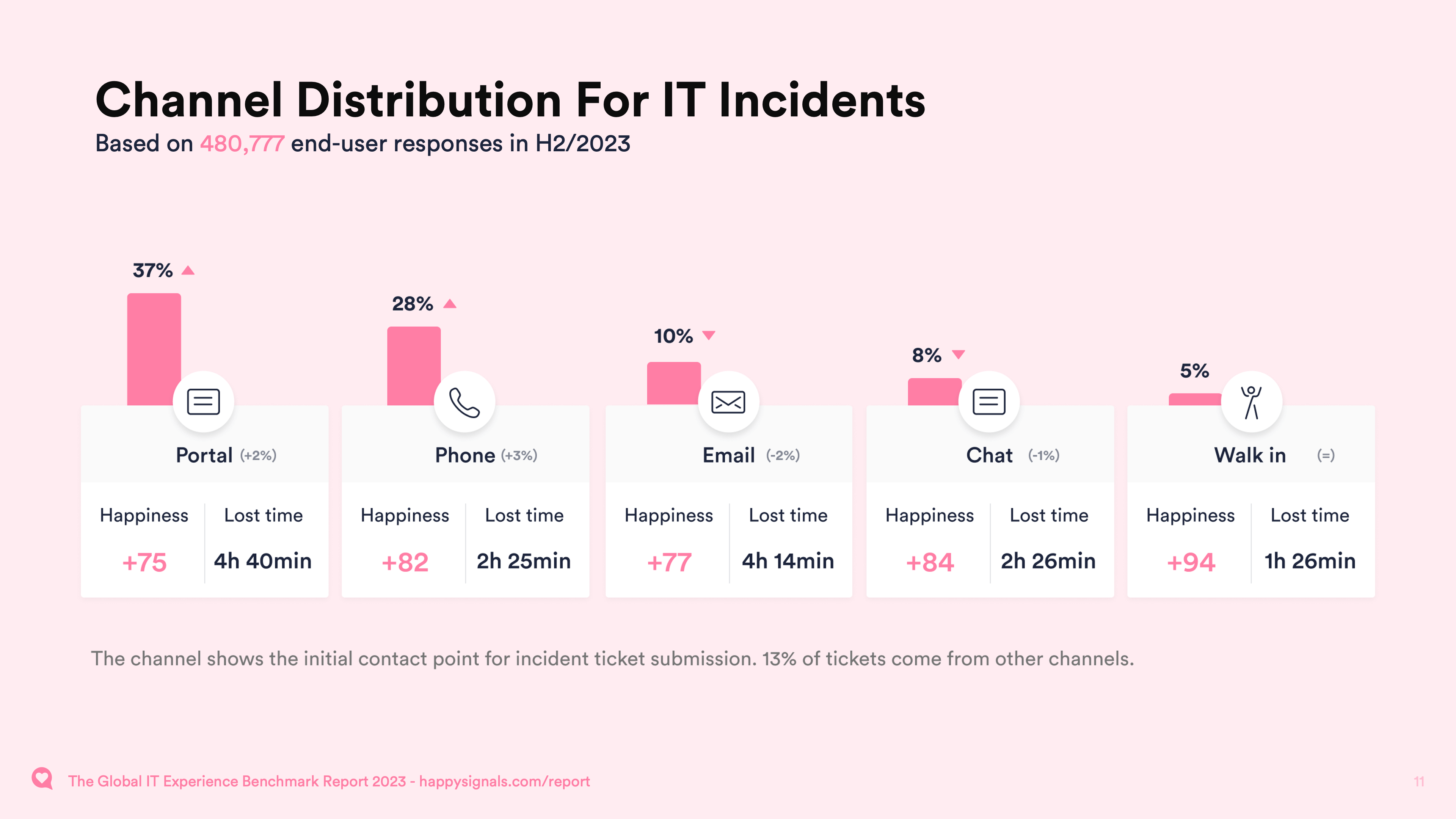I remember a decade and a half ago when the IT service portal was sold as the cure for all IT support issues. IT self-service technology replaced the configuration management database (CMDB) as the must-have IT service management (ITSM) tool capability. The promise of self-service was compelling – “better, faster, cheaper” IT support capabilities that fulfilled modern end-user demands for self-help.
But as with a Gartner Hype Cycle, this “peak of inflated expectations” was soon replaced by the “trough of disillusionment” as the implementation of self-service technology didn’t deliver the expected (and promised) benefits. There was some progress up the “slope of enlightenment.” However, for many IT organizations, the IT service portal was and still is an issue (whether known or not).
This blog looks at how IT service portals have improved in the last decade, even though there’s still much to do, and how IT organizations can improve end-user traction and experiences using experience data.
Snapshots of the limited IT service portal success
A decade ago, I’d like to think we all knew that IT service portals usually struggled to get employee adoption. Many organizations had implemented the technology, but finding those happy with the results was hard. An SDI self-service report from 2017 stated that: “the number of organizations that have realized these benefits and have achieved the anticipated return on investment (ROI) are few, less than 12%.”
Then, 2021 research by ITSM.tools found that “only one in five organizations (21%) reported that the expected ROI for their IT self-service investment was achieved.” However, 30% reported their IT service portal as a “just good enough” success, and another 19% said it’s “not a success but still workable.” Interestingly, only 13% of organizations didn’t offer employees an IT service portal capability.
But this is just the IT perspective of IT service portal success. Experience data shows the end-user view. However, for many organizations, this end-user impact is still likely unknown.
The experience-based view of IT service portals
An IT organization might measure the use of its IT service portal, such as the volume of engagements, the percentage of employees using the portal, or the level of repeat portal use. Of course, this can be skewed by the IT support options available to end-users and their quality. For example, self-service might be the mandated first port of call for IT issues or the telephone channel might offer a far superior experience.
However, this is an “inside-out” view of IT service portal performance. It shows use, i.e. a quantity-based measure, but not the quality. Qualitative metrics might be in place, such as a thumbs-up/down capability for knowledge articles to report whether the IT service portal helped. However, the graphic below from the HappySignals Global IT Experience Benchmark: Full Year 2023 Report shows more of an “outside-in” perspective.

This aggregated experience data shows that the IT service portal is now the most common channel for incident handling. This is good news relative to the expected benefits mentioned earlier. However, the average level of employee Happiness and their perceptions of lost time are the lowest across all five IT support channels. Most organizations don’t appreciate that their IT service portal offers the worst employee experience.
As with any use of HappySignals customer data, it’s important to remember that these organizations already invest in experience-improvement initiatives. Hence, the above figures likely under-report the average level of end-user issues with IT service portals.
It’s likely that your organization’s IT service portal, whether highly used or not, is offering a lower end-user experience and losing employees more time than the IT support channels it has been replacing. So, while the IT organization might be saving money (in terms of incident handling), the business tradeoff could be worse. It’s a classic example of the IT service desk making decisions to save money that likely cost the business more in lost employee productivity.
How to improve your IT service portal
The key opportunities to improve your organization’s IT service portal will depend on collected experience data and the associated insights. However, there are likely many common opportunities that will be relevant. These include:
- Having the right motivation. Research shows successful self-service capabilities focus on providing a better employee experience, not cost savings. Ultimately, if end-users don’t use an IT service portal, which will likely be based on their experience, it will result in a limited or negative ROI.
- Focusing on end-users. After all, the IT service portal is ideally about them, not the IT organization. A good “North Star” for IT service portals is that they must be as good as consumer-world equivalents. This means the IT service portals should be user-friendly and work well on all devices, including mobile devices, in addition to the quality of the services provided. But what do the traditional IT service portal metrics show about usability? Additionally, artificial intelligence (AI)-enabled capabilities will likely need to be factored in. It’s yet another need and opportunity for experience data.
- Recognizing the need for organizational change management (OCM). Introducing an IT service portal is a change to the traditional way of working, and employees must buy into the change to succeed. One of the common use cases for experience data is understanding change progress, with the required course corrections made as needed.
- Optimizing self-help capabilities for success. This includes having sufficient knowledge articles (in quantity and quality terms), search capabilities that consistently work for end-users, a simple-to-understand service catalog, and automated services such as password resetting and software provision. Ultimately, if it’s easier (and better) for end-users to use another IT support channel, they usually will.
- Providing multiple IT support access channels. This success factor has two dimensions. First, it’s important not to railroad end-users into using the IT service portal (especially if it’s a service and experience degradation). Second, the IT service portal shouldn’t be a single webpage that end-users need to access to use. Instead, IT service portal capabilities can be made available via different mechanisms, such as chatbots that can be mobile apps or embedded within work collaboration services (Microsoft Teams and Slack are examples). Both improve the end-user experience when done right.
- Building the (IT) service portal around employees, not the service provider. In an ideal world, employees don’t need to use a discrete IT service portal, HR service portal, facilities service portal, etc. An enterprise service portal offers a better service and support experience, but this needs to be planned for and executed well.
- Promoting awareness and adoption. While not design-related, IT service portal adoption requires more than a “build it and they will come” approach. So invest not only in the aforementioned OCM tools and techniques (which includes benefits-selling and training) but also in ongoing data-driven marketing campaigns to raise awareness of the service portal’s underused capabilities. This can include the sharing of experience improvement data.
If you want to learn about how experience data and insights can be used to improve your corporate IT service portal, find out more about the HappySignals platform here.





